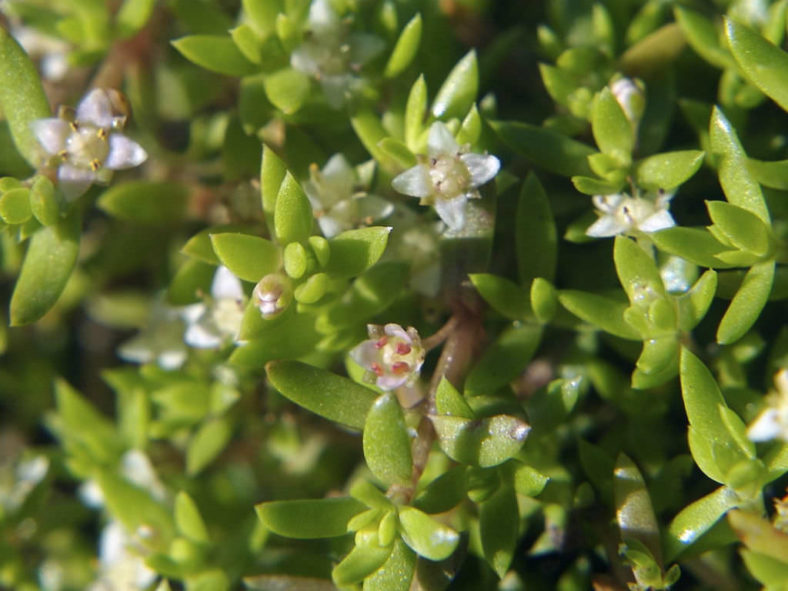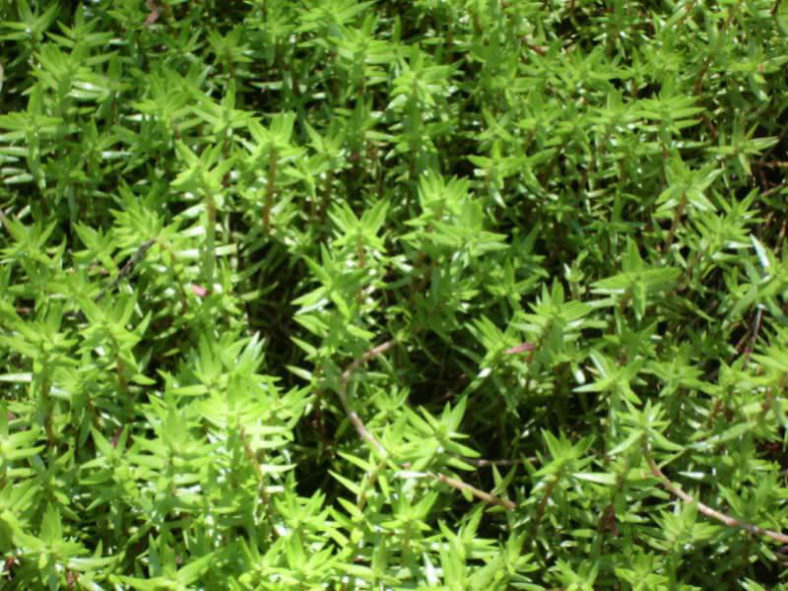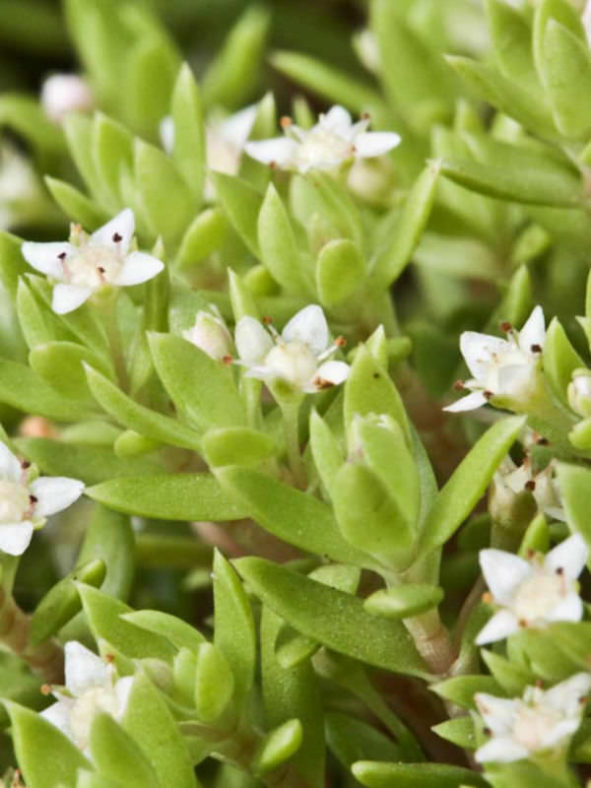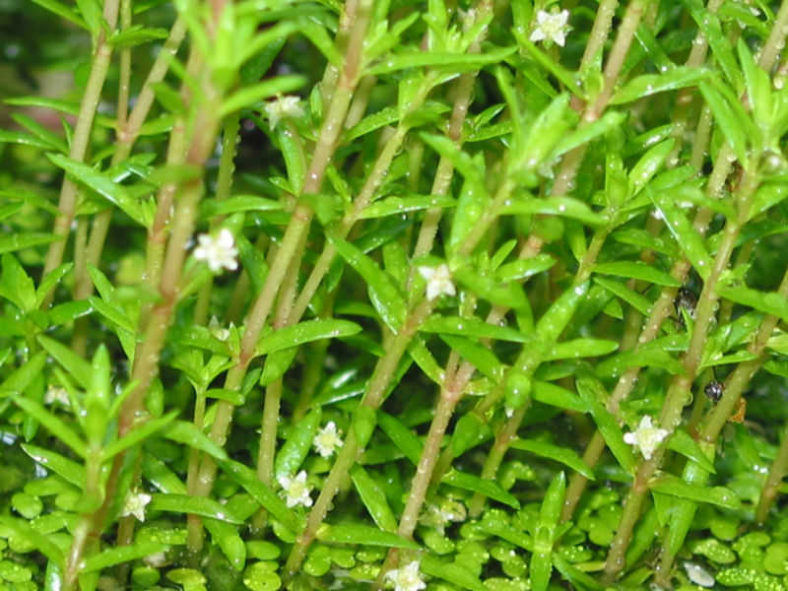Scientific Name
Crassula helmsii (Kirk) Cockayne
Common Name(s)
Swamp Stonecrop, Australian Swamp Stonecrop, New Zealand Pigmyweed
Synonym(s)
Bulliarda recurva, Tillaea helmsii, Crassula recurva
Scientific Classification
Family: Crassulaceae
Subfamily: Crassuloideae
Genus: Crassula
Etymology
The specific epithet "helmsii" (pronounced "HELMS-ee-eye") honors Richard Helms (1842-1914), a German-born Australian naturalist whose work in botany, zoology, geology, and ethnology covered various parts of Australia and New Zealand.
Origin
Crassula helmsii is native to Australia and New Zealand.
Description
Crassula helmsii is a small aquatic or semiterrestrial succulent with creeping or floating, much-branched stems with green, narrowly oval leaves. It can grow in several forms, establishing as a submersed plant and an emergent or semi-terrestrial plant on damp ground. The leaves are arranged in opposite pairs and can reach a length of 1 inch (2.5 cm).
The small flowers are white or occasionally pink, have four petals, and appear solitary on stalks in the axils of the leaves in summer. They are always above water.

Hardiness
USDA hardiness zones 9a to 11b: from 20°F (6.7°C) to 50°F (10°C).
How to Grow and Care
Swamp Stonecrop is a stem plant grown both submersed and emersed and as a terrestrial plant. It must be controlled and monitored in pond settings to prevent it from escaping into the garden.
It provides excellent cover for tadpoles, frogs, and small fish from birds and larger fish, serving as a valuable pond plant. However, it is prone to breaching the pond's surface, even when planted 2 feet (60 cm) below the surface, which is not an issue as it allows the plant to flower, with its tiny white star-like flowers, smaller than the stem width.
As an aquarium plant, the stems will thrive and should be treated like any other stem plant. Pinch off the tops when they grow higher than required, and replant them to prevent them from breaking the surface.
This is a highly vigorous plant, adaptable to a wide range of climate conditions. It grows throughout most of the year with minimal winter dieback.
Links
- Back to genus Crassula
- Succupedia: Browse succulents by Scientific Name, Common Name, Genus, Family, USDA Hardiness Zone, Origin, or cacti by Genus
Photo Gallery
Click on a photo to see a larger version.


